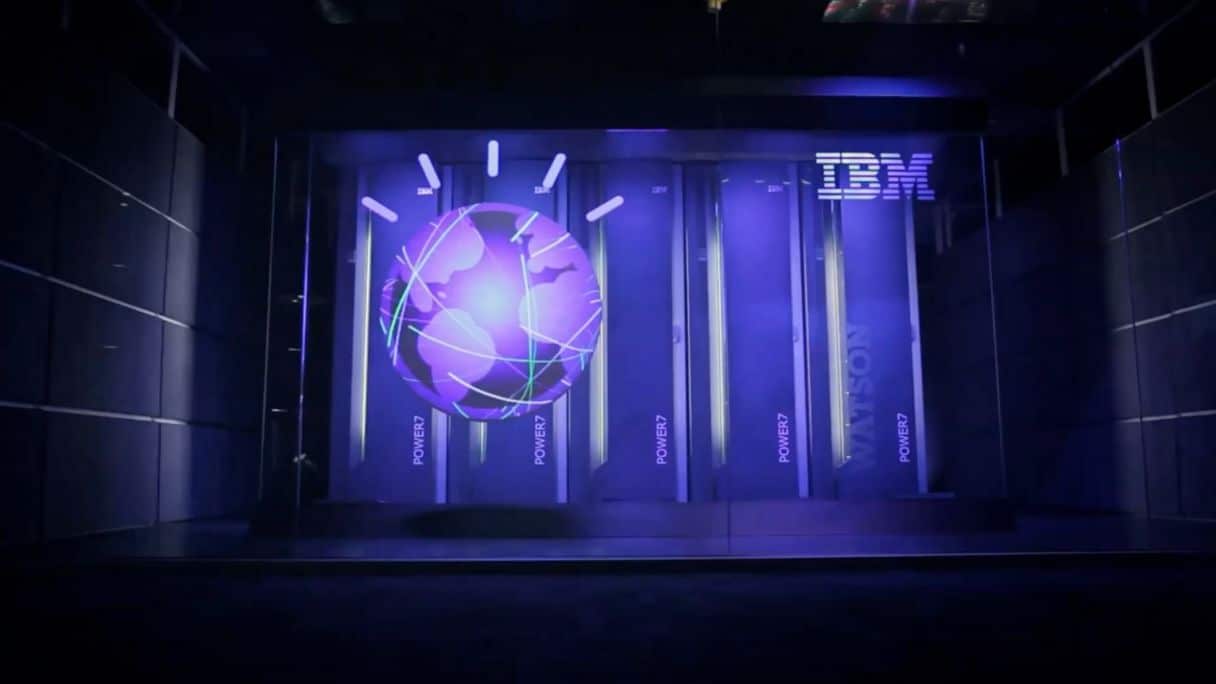International Business Machines Corporation (IBM) stands as an iconic and enduring force in the world of business and tech. IBM’s net worth has fluctuated as the company has risen, fallen, and adapted through the eras of hardware, software and services, and now cloud computing and AI.
Currently in a period of growth, IBM’s net worth of $209.82 billion reflects its resilience in an increasingly competitive market.
Business2Community’s experts have compiled this article to delve into IBM’s financial performance and the milestones that have shaped the business. Entrepreneurs, investors, and aspiring leaders can all learn from the strategic decisions, acquisitions, and groundbreaking inventions that have kept IBM at the forefront of technology for over a century.
IBM Key Company Data
IBM Net Worth: $209.82 billion
Date Founded: June 1911
Founded By: Charles F. Flint
Current CEO: Arvind Krishna
Industries: Technology, AI, SaaS, semiconductors
IBM Stock Ticker: IBM (NYSE)
Dividend Yield: 2.95%
What is IBM’s Net Worth?
IBM’s net worth is $209.82 billion as of November 2024. This value, also known as market cap, has grown by around 50% in the past 12 months.
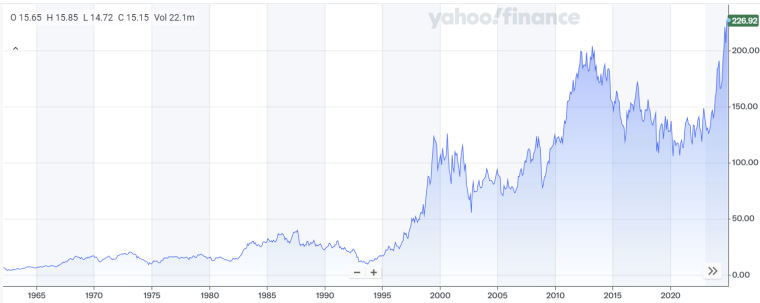
IBM has been trading on the NYSE since January 2, 1962. Shares opened at a split-adjusted price of $1.56. However, IBM’s predecessor company, CTR, began trading over-the-counter in 1915. The company joined the Dow Jones Industrial Average (DJIA) in 1932 before leaving in 1939 and rejoining in 1979.
IBM’s market cap peaked at $241.9 billion in March 2012. The same year, IBM reached record earnings per share (EPS) of $15.25. This was a promising step towards its bold pledge to increase this figure to $20 by 2015 as part of its 2015 Roadmap.
New CEO Ginni Rometty was appointed in 2012 and oversaw multiple acquisitions to transform IBM’s portfolio. However, she inherited what was described by Forbes as “a toxic mix of unsustainable policies” and the company seemed focused on achieving its EPS pledge at the expense of the wider business.
In October 2014, IBM finally dropped its $20 EPS pledge but continued to struggle with falling revenue from its Software and Services sectors – two areas that the company was supposed to be growing.
The acquisition of open source software provider Red Hat for $34 billion in 2019 was IBM’s largest deal to date and marked a new era of hybrid cloud capabilities for the company.
IBM’s market cap reached a 10-year low of $84.7 billion in March 2020, and the following month Arvind Krishna took over as CEO. His strategy to steer the company towards hybrid cloud and AI technology seems to be paying off, as its value has more than doubled during his tenure.
In May 2023, Krishna announced that IBM was halting hiring and replacing 7,800 non-customer-facing jobs with AI over the next five years.
IBM’s fiscal year runs from January to December and its annual report is published at the end of February the following year.
IBM’s Revenue
IBM reported revenue of $61.86 billion in FY2023; a 2.2% increase from the previous year. Its gross profit margin was 55%, an increase of 1.4 percentage points.
IBM splits its revenue into four reporting segments: software, consulting, infrastructure, and financing.
Each segment achieved the following revenue and gross profit margin in FY2023:
- Software: $26.3 billion (80.1%)
- Consulting: $20.0 billion (26.6%)
- Infrastructure: $14.6 billion (56.0%)
- Financing: $0.7 billion (48.1%)
IBM’s revenue reached a peak of $106.9 billion in 2011 before dropping to $102.9 billion in 2012. This followed a decade where IBM had transitioned away from hardware to focus on software and consulting, including selling off its PC division to Lenovo in 2005.
Revenue fell back below the $100 billion mark in 2013 and continued in a downward trend for the rest of the decade.

IBM’s Q3 2024 earnings release reported revenue of $15.0 billion, 1% up year over year. A one-time pension settlement charge of $2.7 billion meant a net loss of $0.3 billion for the quarter. Without this charge, IBM would have recorded a $2.3 billion net profit, representing a 5% year-over-year increase.
The company noted that its investments in the software segment are paying off as its software revenue was up 10% from the same quarter last year. All three other segments, however, decreased year-over-year.
| Year | Revenue ($ billions) |
| 2014 | 92.793 |
| 2015 | 81.741 |
| 2016 | 79.919 |
| 2017 | 79.139 |
| 2018 | 79.591 |
| 2019 | 57.714 |
| 2020 | 55.179 |
| 2021 | 57.350 |
| 2022 | 60.530 |
| 2023 | 61.860 |
IBM Dividend History
IBM pays a quarterly dividend of $1.67 per share. The company boasts that it has raised its dividends for 29 consecutive years, but for the past five years, it has only been a token increase of 1 cent per share to maintain its “dividend aristocrat” status.
The table below shows IBM’s dividend history for the past 10 years:
| Payment date | Dividend amount ($) |
| 10/12/2024 | 1.67 |
| 10/09/2024 | 1.67 |
| 10/06/2024 | 1.67 |
| 09/03/2024 | 1.66 |
| 09/12/2023 | 1.66 |
| 09/09/2023 | 1.66 |
| 10/06/2023 | 1.66 |
| 10/03/2023 | 1.65 |
| 10/12/2022 | 1.65 |
| 10/09/2022 | 1.65 |
| 10/06/2022 | 1.65 |
| 10/03/2022 | 1.64 |
| 10/12/2021 | 1.64 |
| 10/09/2021 | 1.64 |
| 10/06/2021 | 1.64 |
| 10/03/2021 | 1.63 |
| 10/12/2020 | 1.63 |
| 10/09/2020 | 1.63 |
| 10/06/2020 | 1.63 |
| 10/03/2020 | 1.62 |
Up to 2019, IBM conducted regular quarterly stock buybacks worth around $1 billion – sometimes much more. However, following its $34 billion acquisition of Red Hat, IBM announced that it was suspending its share repurchase program to focus on debt reduction and allow greater flexibility for future investment.
As of December 31, 2023, IBM had $2.008 billion of board-authorized common stock repurchases available.
IBM has conducted five stock splits in its history as a publicly traded company. The most recent was a 1046:1000 (x1.046) split in November 2021.
Here are details of all of IBM’s stock splits:
| Date | Split | Multiple | Cumulative Multiple |
| 11-04-2021 | 1046:1000 | x1.046 | x20.92 |
| 05-27-1999 | 2:1 | x2 | x20 |
| 05-28-1997 | 2:1 | x2 | x10 |
| 06-01-1979 | 4:1 | x4 | x5 |
| 05-29-1973 | 5:4 | x1.25 | x1.25 |
Who Owns IBM?
IBM (International Business Machines Corporation) is a publicly traded company. Institutional investors hold majority ownership of the company.
Vanguard Group, Inc. is the leading institutional investor in IBM, holding a 9.77% stake, followed by BlackRock with 8.93% and State Street with 6.02%.
The Foundation of IBM
IBM (International Business Machines Corporation) was founded on June 16, 1911, by Charles F. Flint. It was originally established as the Computing-Tabulating-Recording Company (CTR) through the merger of three companies:
- International Time Recording Company (ITR)
- The Tabulating Machine Company
- The Computing Scale Company of America
Headquartered in New York City, CTR operated with 1,300 employees and maintained offices and plants in Endicott and Binghamton, New York; Dayton, Ohio; Detroit, Michigan; Washington, D.C.; and Toronto, Ontario.
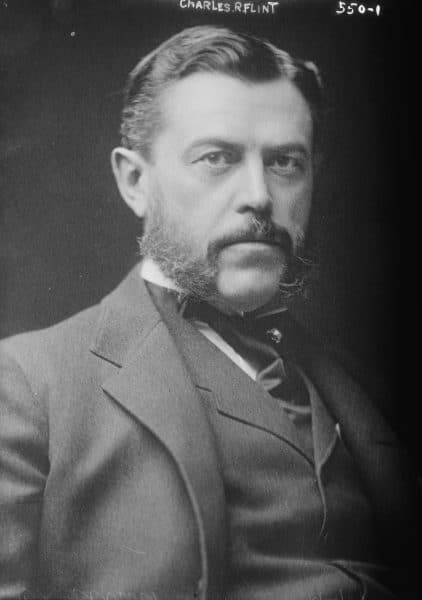
The Computing-Tabulating-Recording Company was involved in the manufacturing and selling of a variety of machines related to data processing and record-keeping. The merger combined the unique products and expertise of its three constituent companies, resulting in a diverse range of offerings — from meat and cheese slicers to advanced punch cards and tabulators.
In 1914 Charles Flint recruited Thomas J. Watson as the general manager for the Computing Tabulating Recording Company. Under Thomas Watson’s leadership, CTR expanded its focus on tabulating machines and began to emphasize a customer-oriented and sales-driven approach.
This shift in strategy and leadership laid the foundation for the transformation of the Computing Tabulating Recording Company into the International Business Machines Corporation (IBM) in 1924.
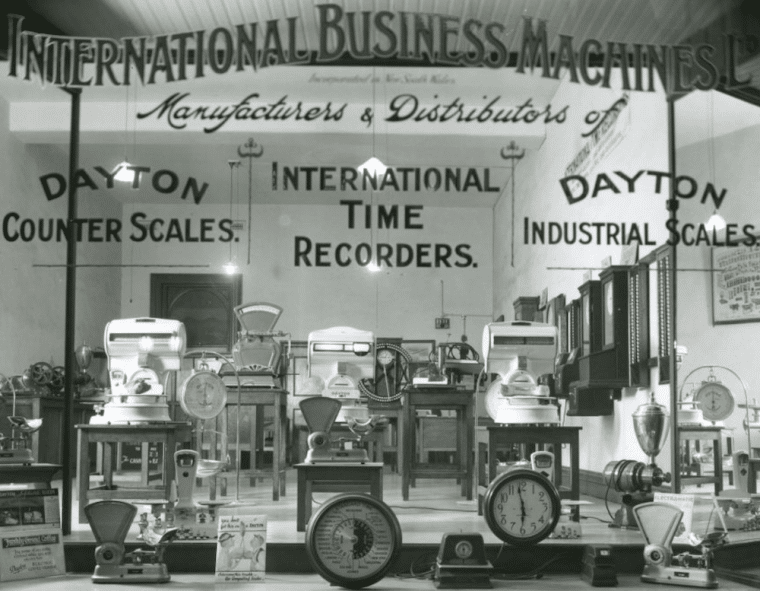
The name change reflected the company’s evolution from a collection of tabulating and time-recording businesses into a broader and more integrated provider of information technology solutions. Thomas Watson Sr. encapsulated the essence of this evolution with a profound statement:
What every business needs is more people who think.
Recognizing the transformative power of individuals capable of thinking creatively and strategically, Thomas Watson set the stage for IBM’s enduring legacy in the tech industry.
Growth and Development of IBM
Journeying through IBM’s growth reveals a tech titan’s transformation from its early days as a recording, tabulating, and scaling company in the 1910s to its current status as an IT industry leader.
Let’s explore the rich history of IBM and delve into the development of the International Business Machines Corporation over more than a century.
A History of IBM – Key Dates
- In 2023 Vanguard Group, Inc. was the leading institutional investor in IBM.
- IBM was initially established in 1911 as the Computing-Tabulating-Recording Company (CTR).
- CTR was renamed “International Business Machines” in 1924.
- In 1983, Time Magazine named IBM’s “Personal Computer” the “Machine of the Year”.
- IBM generated $57.3 billion in 2023, making it the third-largest IT service company globally.
1910- 1931: Early Days of Computing Tabulating Recording Company (CTR)
During CTR’s initial years, the Computing-Tabulating-Recording Company (CTR), primarily focused on the production and innovation of tabulating equipment. These tabulating machines were mechanical devices designed to process and tabulate data using punched cards.
Following Thomas Watson’s appointment as CTR president in 1915, the company saw strategic developments. On November 29, 1917, the International Business Machines Company, Ltd., of Canada was founded to consolidate the Canadian business of CTR’s original components.
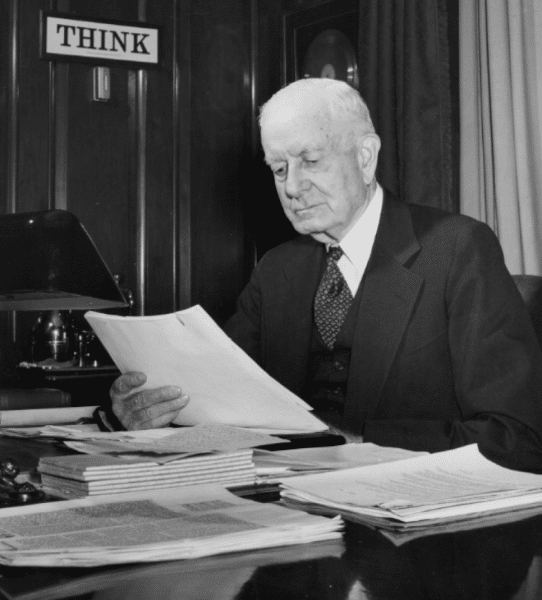
Watson introduced the concept of “THINK” to CTR in 1915 to emphasize the importance of strategic decision-making. By the early 1930s, plastic lamination advancements enabled widespread distribution, elevating the THINK motto at IBM.
It transcended various mediums, including wood, stone, bronze, publications, and New Yorker cartoons, remaining the enduring name of IBM’s employee publication.
CTR made significant strides in data processing during the late 1910s and early 1920s. The company developed an electric synchronization clock for time and programming systems.
As CTR’s activities expanded internationally, it needed more of a relevant name for its rapid development. On February 14, 1924, CTR officially became the International Business Machines Corporation (IBM). Some of IBM’s initial international expansions and installations included:
- 1924: IBM completes its German plant and established operations in France.
- 1929: Compania Internacional de Maquinas Comerciales S.A. is formed as the operational entity for Mexico.
- 1931: The Hall of the League of Nations at Geneva sees the installation of the first permanent Filene-Finlay Translator.
The first IBM punch card was the IBM 80-column punch card, introduced in 1928. It became an industry standard, enabling more efficient data processing and tabulation. The punch card marked a technological milestone but also provided a significant profit stream for IBM, and directed the company to the forefront of data processing.
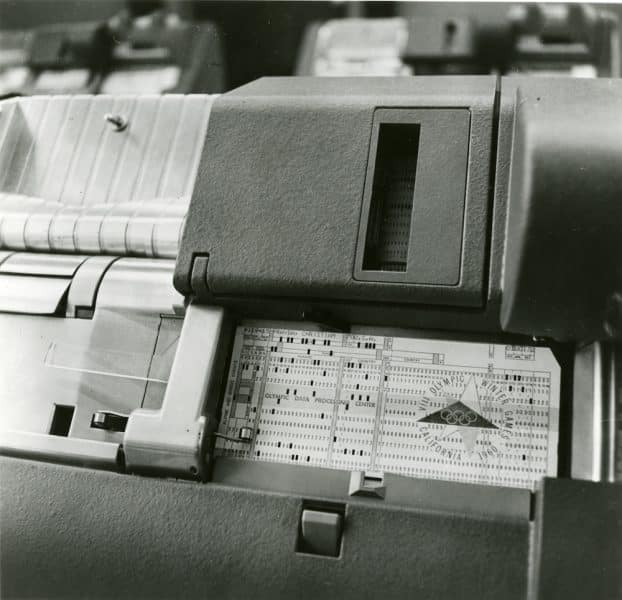
1932-1950: The Rise of The International Business Machines Corporation
Watson set up various IBM employee benefit programs during the Great Depression in the 1930s. For example, group life insurance, survivor benefits, and paid vacations — initiatives ahead of their time among corporations.
Furthermore, in 1933, Watson oversaw the development of IBM’s Schoolhouse at Endicott, to develop THINK and provide education and training opportunities for IBM’s employees.
In 1935, IBM invested $1 million in typewriter development. International Business Machines launched the first electronic typewriter in the United States — the IBM Electric Typewriter, Model 01.
Furthermore, IBM expanded its business offerings with the introduction of the International Proof Machine. Originally designed for check clearing in banks, this tabulating equipment played a role in advancing computing capabilities, particularly in arithmetic calculations, exemplifying IBM’s commitment to innovation in the technology landscape.
Amidst the events of World War II, IBM capitalized on the increasing demand for tabulating machines. However, during the rise of the Nazi regime, IBM’s involvement took a controversial turn as the company leased tabulating machines to the Nazis.
During WWII, Germany ranked as IBM’s second-largest customer, following the United States. According to the Washington Post, Thomas Watson accepted an honor medal created by Adolf Hitler in 1937.
However, after June 1940, IBM’s relationship with Nazi Germany soured. Thomas Watson, disapproving of Hitler’s policies, returned the medal. In the following year, Watson lost control of IBM’s German subsidiary to Heidinger, a Nazi party member with whom IBM New York had financial and operational disputes.
IBM entered the computer systems industry in the 1940s with the completion of the Automatic Sequence Controlled Calculator, or Mark I, in 1944. Developed in collaboration with Harvard University, it was the first machine capable of automatic long computations.
In 1945, Thomas J. Watson Sr. established the Watson Scientific Computing Laboratory at Columbia University. This laboratory was created to advance research in the field of scientific computing. It was later incorporated into IBM as the Thomas J. Watson Research Center in 1961.
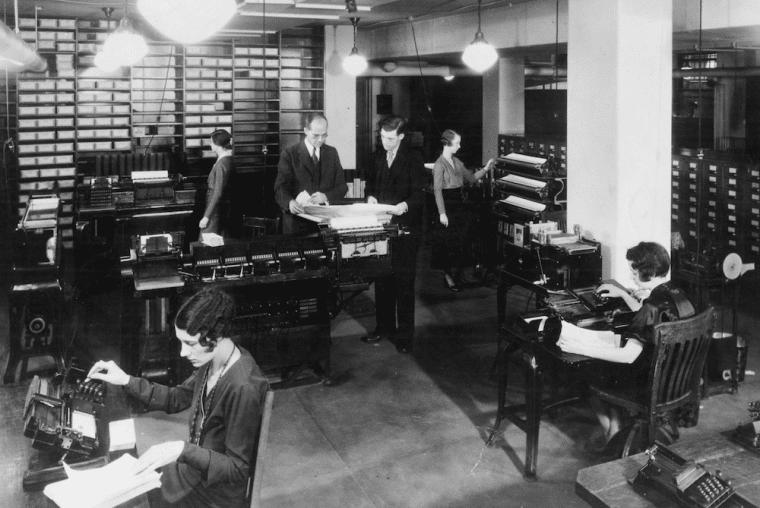
1951-1970: IBM Transforms Products and Services
In the early 1950s, IBM adopted magnetic tape for data storage, revolutionizing the management of large information volumes and replacing the need for extensive stacks of punched cards. Simultaneously, the introduction of the IBM 701 in 1952 and its utilization of vacuum tubes, laid the foundation for the integration of computer systems into various business applications.
IBM announced the Electronic Data Processing Machine publicly in April 1953, marking a critical step in the company’s transition from punched-card machines to advanced electronic computer systems.
In 1952, Thomas J. Watson Sr. stepped down as President of the International Business Machines Corporation. His son, Thomas J. Watson Jr., succeeded him, assuming leadership of the company. Watson Jr. later went on to become the CEO of IBM in 1956.
IBM’s foray into electronic computing was influenced by the leadership of Watson Jr., who saw this emerging technology as the future. Watson Jr. helped IBM revolutionize transaction processing with the IBM 305 RAMAC in 1957, the first-ever computer disk for storing data. At the same time, IBM introduced FORTRAN, a widely used computer language based on algebra and syntax rules, showcasing the company’s commitment to innovation.
IBM developed System 360 in April 1964, a large family of computers that could be used for various tasks in businesses and science. It allowed easy upgrades without having to start from scratch, making it an important development in the history of computer systems.
System/360 provided users with a selection of five processors and 19 options for power, speed, and memory combinations. Users with different processing capabilities could still operate the same magnetic tape and disk products.
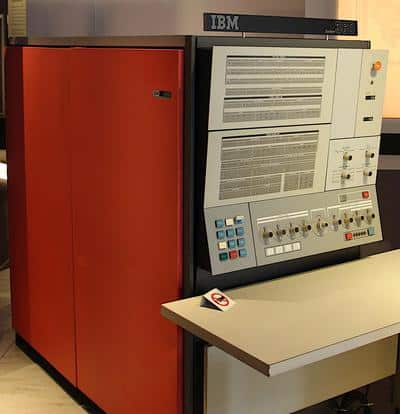
The system achieved significant performance improvements through Solid Logic Technology, featuring half-inch ceramic modules with denser, faster, and more reliable circuitry than earlier transistors. Over the years, the System/360 evolved into newer mainframe systems, each generation incorporating advancements in technology and computing capabilities. The later models include the System/370, System/390, and the IBM Z series.
In 1969 IBM made a strategic decision to separate hardware and software components, which allowed customers to purchase them independently. Unbundling gave IBM customers the flexibility to choose specific components and software, promoting competition and innovation in the technology market.
IBM supported NASA in the Apollo missions. The versatility of System/360’s processors and the flexibility offered by unbundling allowed for tailored computing solutions. This, in turn, facilitated the advanced computing needs of NASA during the Apollo missions.
1971-1990: IBM Ventures Into Consumer Market
In 1971 IBM invented the floppy disk and revolutionized data storage with its compact, portable, and rewritable features. It replaced bulkier alternatives like magnetic tapes and advanced personal computer capabilities.
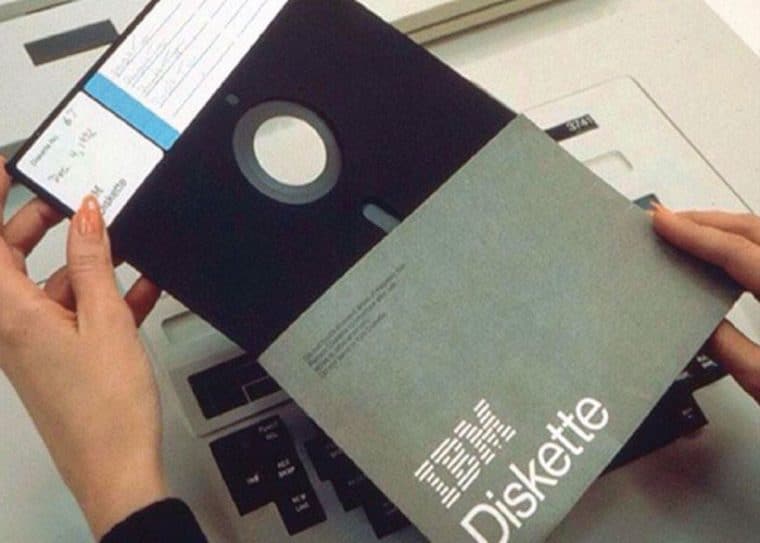
The same year Thomas Watson Jr. resigned as CEO due to a heart attack. Under his leadership, IBM had reached revenues near $8 billion and expanded its workforce by 270,000. Following his departure, Watson served as the US ambassador to the Soviet Union from 1979 to 1981 and remained on IBM’s board until 1984.
In 1972, Lloyds Bank partnered with IBM to launch the IBM 2984, a self-service kiosk dispensing cash, known in modern days as an Automated Teller Machine (ATM). Then in 1973, IBM introduced its second-generation bank machine, the 3614, which allowed truly automated banking — customers could check their balances and make deposits and payments in addition to cash withdrawals.
Frank T. Cary who assumed the role of IBM’s CEO in 1973, introduced more innovative products during his tenure. For example, IBM introduced IBM’s 3660 Supermarket System, which revolutionized scanning product prices in grocery stores.
The IBM 5100 Portable Computer, introduced in 1975, weighed approximately 50 pounds. It featured a built-in keyboard, and a 5-inch CRT display, and could run both APL and BASIC programming languages.
In the late 1970s, IBM faced challenges as the rapidly evolving computer industry saw the emergence of THE BUNCH competitors. IBM navigated through the transition from mainframe-centric computing to the rise of personal computers.
In 1981, International Business Machines Corporation, under the leadership of CEO John R. Opel, strategically ventured into the consumer computing market by introducing IBM PCs (IBM 5150 Personal Computers). Priced at $1,565, the bundled system unit, keyboard, and color/graphics capability marked IBM’s foray into the personal computing era.
Under Opel’s leadership, IBM successfully weathered challenges, including the advent of personal computers and a protracted US antitrust investigation. However, the 1980s saw a continued shift in leadership as John Fellows Akers took on the role of CEO in 1985.
In 1983, Time Magazine named the “Personal Computer” the “Machine of the Year”, showcasing the widespread impact and success of personal computers in transforming various aspects of society. This acknowledgment underscored the significant cultural and technological influence of personal computers during that period.
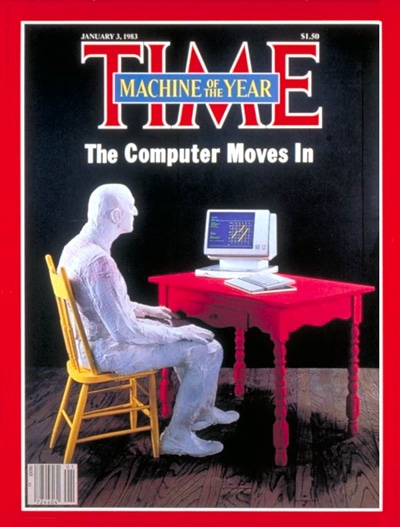
In response to the popularity of personal computers, IBM introduced antivirus tools in 1987 as a proactive measure to protect computer systems from virus attacks. This development reflected IBM’s commitment to enhancing the security and reliability of its computing technologies.
1991 – 2005: IBM Designs Multiple Supercomputers
The ThinkPad line of laptop computers was introduced by the International Business Machines Corporation in 1992.
Akers was removed as CEO by the International Business Machines Corporation board members in 1993 and was replaced by Louis V. Gerstner. This leadership transition stemmed from the company’s $5 billion loss in 1992, marking the largest financial setback in American business history at the time.
Gerstner prioritized providing customers with integrated business services instead of separating IBM into different companies. Furthermore, In 1995, at the COMDEX trade show, Gerstner highlighted IBM’s new focus on network computing as the core strategy for future industry growth.
IBM acquired Lotus Development Corp for $3.5 billion in 1995 and Tivoli Systems Inc. for $743 million in 1996. These acquisitions complemented Gerstner’s vision. Notably, the emphasis on computer services led to rapid growth, exceeding 20% annually.
In 1997, IBM’s supercomputer Deep Blue (IBM RS/6000 SP), a chess-playing computer made history. It defeated the reigning world chess champion, Garry Kasparov, in a six-game match.
Deep Blue was combined with special-purpose hardware and software that could calculate 200 million chess positions per second. This event marked a significant milestone in the development of artificial intelligence and showcased IBM’s prowess in the field.
New IBM products, strategic acquisitions, and business initiatives in the late 90s played a pivotal role in reestablishing the company as a forefront information technology innovator.
In 2000, IBM developed a commercial version of the ASCI White supercomputer. Located at the Lawrence Livermore National Laboratory in California, The US Government dedicated it to being the fastest computer in the world. International Business Machines researchers also developed “pixie dust“, a new type of magnetic coating for hard disk drives in 2001. This technology significantly increased the data storage density on hard drives, allowing them to store much more data in the same physical space.
In 2002 International Business Machines acquired PricewaterhouseCoopers for $ 3.5 billion. IBM’s technology expertise with PwC’s business consulting knowledge would provide comprehensive solutions for clients’ diverse business challenges and drive digital transformation across industries.
Samuel J. Palmisano became IBM’s CEO in March 2002 and was instrumental in unveiling IBM’s Smarter Planet agenda. The IBM Smarter Planet initiative uses technology and innovation to address global challenges and enhance system efficiency, creating a smarter, interconnected world.
As Palmisano put it himself:
Let’s seize this opportunity to create more and better jobs, cultivate valuable skills, and not simply repair but prepare our economy for the 21st century.
2006 – 2019: IBM’s Era of Strategic Acquisitions
In 2005 International Business Machines’ personal computer division was acquired by Lenovo for $1.25 billion. This strategic shift took the focus away from the consumer PC market and allowed IBM to concentrate on its core strengths in enterprise solutions, services, and emerging technologies.
Lenovo, a leading Chinese technology company, gained access to IBM’s PC business, including the iconic ThinkPad brand, strengthening its position in the global personal computer market. In 2006, IBM introduced a speech-to-speech translation system to US forces in Iraq. This technological advancement facilitated communication between English-speaking soldiers and Iraqi citizens, helping bridge language barriers.
IBM Watson made its debut in 2007 as a question-answering computing system. It gained global attention when it competed and won the Jeopardy! game show in 2011 against human champions, showcasing advancements in natural language processing and artificial intelligence.
In 2008, IBM acquired Statistical Package for the Social Sciences (SPSS) for $1.2 billion. SPSS was renowned for its advanced statistical analysis software, and the acquisition enabled IBM to enhance its offerings in data analytics and business intelligence.
2012 saw IBM reach a historic moment with the appointment of Ginni Rometty as the company’s first female CEO. International Business Machines advanced in hybrid cloud, security, quantum computing, industry expertise, and data and AI through organic growth and strategic acquisitions.
Under Rometty’s guidance, IBM acquired 65 companies, notably Red Hat, the largest purchase in IBM’s history. The acquisition of Red Hat, a leading provider of open-source software solutions, for $34 billion in 2019, bolstered IBM’s capabilities in cloud computing and enterprise solutions.
Concurrently, Rometty transformed over half of IBM’s portfolio, creating a $21 billion hybrid cloud business and positioning IBM as a world leader in AI, quantum computing, and blockchain. Simultaneously, she divested almost $10 billion in annual revenue to concentrate on high-value, integrated offerings.
IBM introduced Watson Health in 2015 to leverage the power of artificial intelligence and cognitive computing to advance healthcare. The platform utilized IBM’s Watson technology to interpret large volumes of health-related data, including medical literature, clinical trial results, and patient records. The goal was to provide insights that could assist healthcare professionals in making more informed decisions, improving patient care, and driving innovation in the healthcare industry.
In 2016 Watson Health successfully acquired Truven Health Analytics for $2.6 billion. This expanded its portfolio with over 8,500 clients, encompassing US government agencies, employers, health plans, hospitals, clinicians, and life sciences companies.
However, in 2022, Francisco Partners acquired Watson Health along with its healthcare data and analytics assets for an undisclosed amount.
2020 – 2023: IBM’s Cognitive Computing Empowerment
Amid the COVID-19 pandemic, IBM harnessed advanced AI through the Corpus Conversion Service and Corpus Processing Service. These technologies facilitated specific queries to research papers, extracting crucial COVID-19 insights.
During the pandemic, IBM focused on:
- Empowering a remote workforce
- Engaging customers virtually
- Enabling remote access to everything
- Accelerating agility and efficiency
- Protecting against new cybersecurity risks
- Reducing operational costs and enhance supply chain continuity
- Supporting health providers and government services
Arvind Krishna assumed the role of Chairman and CEO in April 2020, steering IBM’s strategic direction towards hybrid cloud and AI as the core pillars of its business. In Q2 2023, IBM Cloud held a 3% global market share in the Cloud market, ranking as the fifth-largest cloud infrastructure provider.
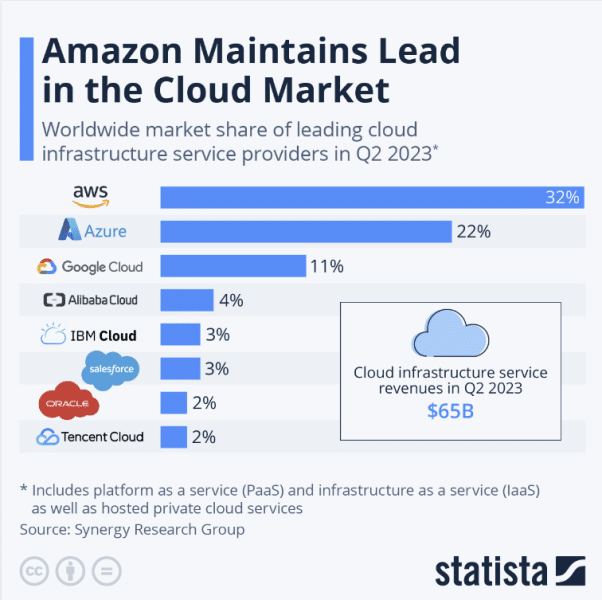
In 2020, IBM Watson Assistant unveiled an enhanced intent detection model, incorporating various machine learning techniques like traditional, transfer, and deep learning, requiring less training. The IBM Watsonx™ Assistant stands out as an advanced conversational AI platform, addressing traditional support challenges for outstanding user experiences. Leveraging reliable large language models (LLMs) and providing an intuitive interface, it supports the development of AI-powered voice agents and chatbots.
As of 2023, IBM provided a variety of cognitive solutions, including pre-built options like Watson Virtual Agent and Watson Explorer. Alternatively, developers can craft personalized cognitive apps using IBM’s cloud platform, Bluemix.
In 2022, IBM’s CEO Arvind Krishna emphasized the company’s approach, which integrates essential software, consulting, and infrastructure. Notably, more than 70% of IBM’s annual revenue was in software and consulting.
In 2023, IBM generated $57.3 billion in revenue, making it the third-largest IT service company globally. Furthemore, the International Business Machines Corporation had a brand value of around $87.66 billion in 2023. Since 2012, IBM has experienced fluctuations in its global brand value, reaching its peak of $116 billion in that year.
History of the IBM Logo
The International Business Machines logo was created by Paul Rand in 1956. Over time, the logo has seen subtle modifications in terms of spacing and proportions, but the 8-bar design has remained consistent since 1972.
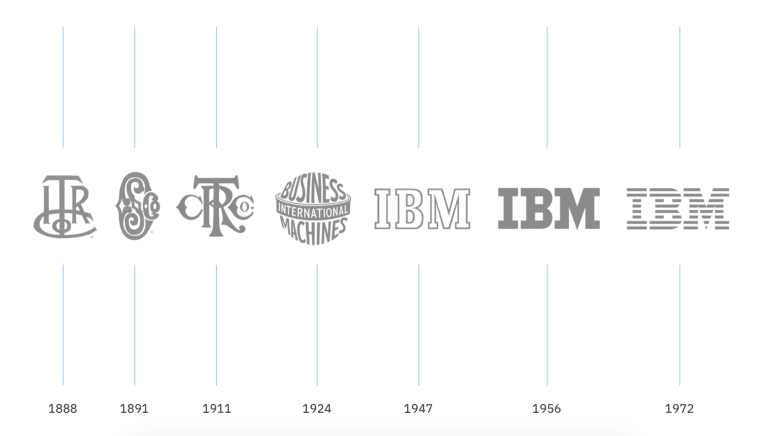
In 1972, a blue color was officially adopted for the logo, symbolizing trust, reliability, and authority. The color blue has since become synonymous with IBM’s brand identity.
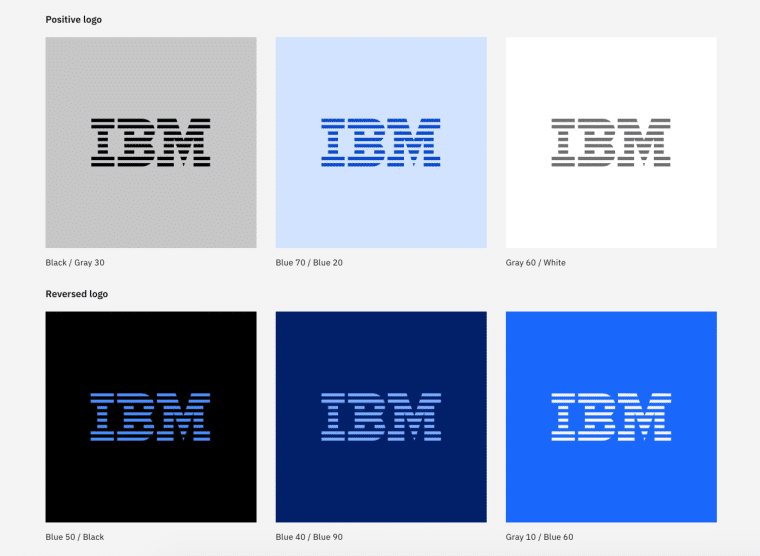
The simplicity and timelessness of the IBM logo reflect the company’s commitment to innovation and stability, making it one of the most recognizable corporate logos in the world.
The Future of IBM
Embracing innovation, particularly through the integration of hybrid cloud and artificial intelligence, places IBM at the forefront of industry transformation. CEO Arvind Krishna has underscored the strategic importance of the open hybrid cloud platform and AI capabilities as key drivers of IBM’s growth.
In line with its ambitious business strategy, IBM is actively championing sustainability by setting a goal to source 75% of its cloud worldwide data centers’ energy from renewable sources by 2025. Impressively, this objective has already been met in the European Union, where 100% of data centers operate using renewable energy certificates.
IBM’s proactive use of the latest technology, exemplified by initiatives like “Future Shocks,” showcases the company’s forward-thinking approach to preparing for unforeseen challenges. With a robust legacy of adapting to change and a steadfast commitment to addressing contemporary challenges, IBM is poised to shape the future of information technology.
